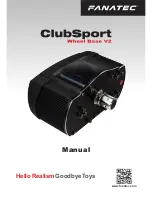
CHAPTER 5: SETTINGS
CONTROL ELEMENTS
M60 MOTOR PROTECTION SYSTEM – INSTRUCTION MANUAL
5-291
5
The steady-state frequency of a power system is an indicator of the existing balance between the generated power and
the load. Whenever this balance is disrupted through the disconnection of significant load or the isolation of a part of the
system that has a surplus of generation, the effect is an increase in frequency. If the control systems of the generators do
not respond fast enough, to quickly ramp the turbine speed back to normal, the overspeed can lead to the turbine trip. The
overfrequency element can be used to control the turbine frequency ramp down at a generating location. This element
can also be used for feeder reclosing as part of the "after load shedding restoration."
The
OVERFREQ 1 SOURCE
setting selects the source for the signal to be measured.
The
OVERFREQ 1 PICKUP
setting selects the level at which the overfrequency element is to pickup.
Figure 5-162: Overfrequency logic
5.8.7 Motor start supervision
5.8.7.1 Menu
SETTINGS
CONTROL ELEMENTS
START SUPERVISION
The motor start supervision feature consists of three elements that guard against excessive starting duty. These elements
are in addition to the start inhibit that can be imposed by the thermal model. A method to prevent starting is by wiring an
M60 output contact actuated by motor start supervision elements in the motor energizing control circuit. The output
contact changes state only when the motor is stopped to accommodate control circuits that must be continuously
energized, such as a contactor.
The three elements of motor start supervision are
•
Maximum starting rate (starts per hour)
— This element defines the number of start attempts allowed in a
programmable time interval. Only the number of restart attempts during the interval is controlled and not the time
between. The latter is controlled by the time between starts element. When the motor is stopped after the last allowed
start, the energizing or closing control circuit is disabled until the end of the defined interval. Every start initiates a new
interval in which the start number is limited. A typical starting frequency is three starts per hour.
•
Time between starts
— This function enforces a programmable minimum time duration between two successive start
attempts. A time delay is initiated with every start, and if the motor is stopped a restart is not allowed until the
specified interval has lapsed.
•
Restart delay
— The restart delay function defines a programmable delay after a motor has stopped before it can be
started again. It allows load interruption transient conditions, such as down-hole pump applications where
START SUPERVISION
MAXIMUM STARTING
RATE (STARTS/HR)
See below
TIME BETWEEN
STARTS
RESTART DELAY
Содержание M60
Страница 9: ...TABLE OF CONTENTS M60 MOTOR PROTECTION SYSTEM INSTRUCTION MANUAL ix INDEX ...
Страница 10: ...x M60 MOTOR PROTECTION SYSTEM INSTRUCTION MANUAL TABLE OF CONTENTS ...
Страница 14: ...1 4 M60 MOTOR PROTECTION SYSTEM INSTRUCTION MANUAL FOR FURTHER ASSISTANCE CHAPTER 1 INTRODUCTION 1 ...
Страница 208: ...4 88 M60 MOTOR PROTECTION SYSTEM INSTRUCTION MANUAL FLEXLOGIC DESIGN USING ENGINEER CHAPTER 4 INTERFACES 4 ...
Страница 494: ...5 286 M60 MOTOR PROTECTION SYSTEM INSTRUCTION MANUAL CONTROL ELEMENTS CHAPTER 5 SETTINGS 5 Figure 5 158 Time out mode ...
Страница 552: ...5 344 M60 MOTOR PROTECTION SYSTEM INSTRUCTION MANUAL TESTING CHAPTER 5 SETTINGS 5 ...
Страница 596: ...7 14 M60 MOTOR PROTECTION SYSTEM INSTRUCTION MANUAL TARGETS MENU CHAPTER 7 COMMANDS AND TARGETS 7 ...
Страница 602: ...9 4 M60 MOTOR PROTECTION SYSTEM INSTRUCTION MANUAL SATURATION DETECTOR CHAPTER 9 THEORY OF OPERATION 9 ...
Страница 652: ...C 6 M60 MOTOR PROTECTION SYSTEM INSTRUCTION MANUAL COMMAND LINE INTERFACE APPENDIX C COMMAND LINE INTERFACE C ...
Страница 660: ...iv M60 MOTOR PROTECTION SYSTEM INSTRUCTION MANUAL ABBREVIATIONS ...
















































